Technological advancements, financial Inclusion, and digital banking will be just a few of the key drivers of India’s economic growth and influence
Words by Neeraj Tiwari
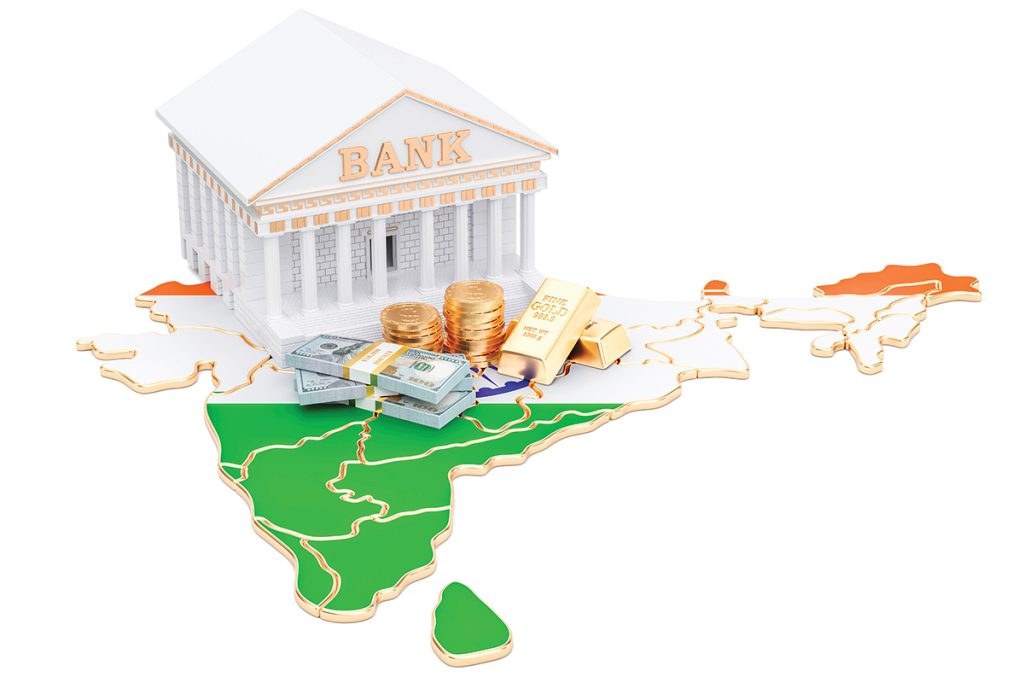
As India looks towards a century of independence in 2047, the nation’s banking sector is on the brink of a remarkable transformation. Significant economic reforms, cutting-edge technological advancements, and a burgeoning middle class are expected to propel this change. Experts predict that by 2047, India will not only solidify its status as a global economic powerhouse but also revolutionize banking with innovative approaches and a robust digital infrastructure.
Economic landscape and projections
The Reserve Bank of India (RBI) forecasts a dramatic expansion of the banking sector over the next two decades. By 2047, the sector’s assets could exceed $10 trillion, driven by robust GDP growth, enhanced financial inclusion, and the widespread adoption of digital banking.
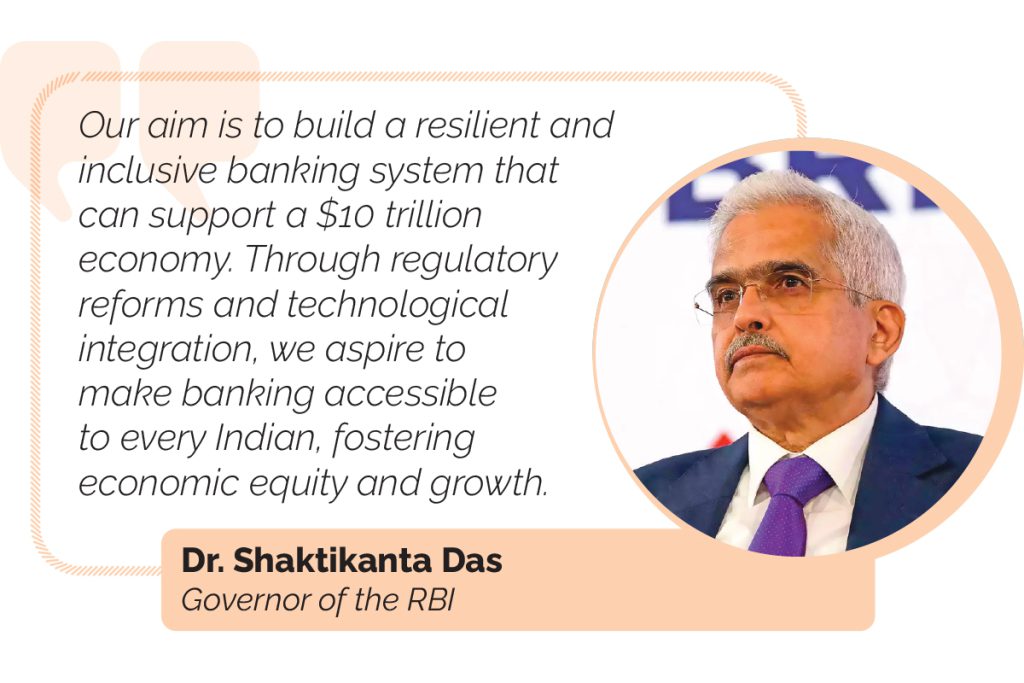
“Our aim is to build a resilient and inclusive banking system that can support a $10 trillion economy. Through regulatory reforms and technological integration, we aspire to make banking accessible to every Indian, fostering economic equity and growth.”
- Dr. Shaktikanta Das, Governor of the RBI
Technological advancements
Technological advancements, particularly in artificial intelligence (AI), blockchain, and fintech, are poised to revolutionize banking operations. Leading banks are heavily investing in these technologies to enhance customer experience, improve operational efficiency, and manage risks better.
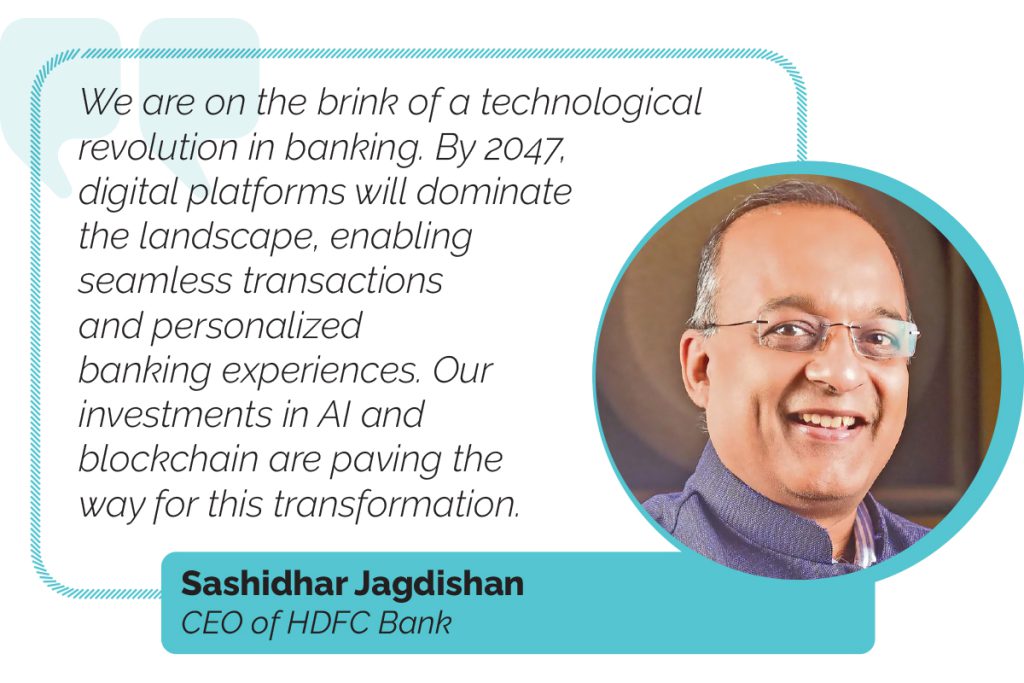
“We are on the brink of a technological revolution in banking. By 2047, digital platforms will dominate the landscape, enabling seamless transactions and personalized banking experiences. Our investments in AI and blockchain are paving the way for this transformation.”
- Sashidhar Jagdishan, CEO of HDFC Bank
Financial inclusion and digital banking
India has made significant strides in financial inclusion through initiatives like Jan Dhan Yojana, which has integrated millions into the formal banking system. The continued adoption of digital banking platforms is expected to further bridge the urban-rural divide.
“The future of banking in India lies in inclusivity. By leveraging digital technologies, we can ensure that banking services reach the remotest corners of the country. This will not only empower individuals but also spur local economies and contribute to overall national growth.”
- Uday Kotak, Indian banker and Founder of Kotak Mahindra Bank
Challenges and opportunities
Despite the promising outlook, the banking sector will face challenges such as cybersecurity threats, regulatory compliance, and the need for continuous innovation. However, these challenges also present significant opportunities for growth and improvement.
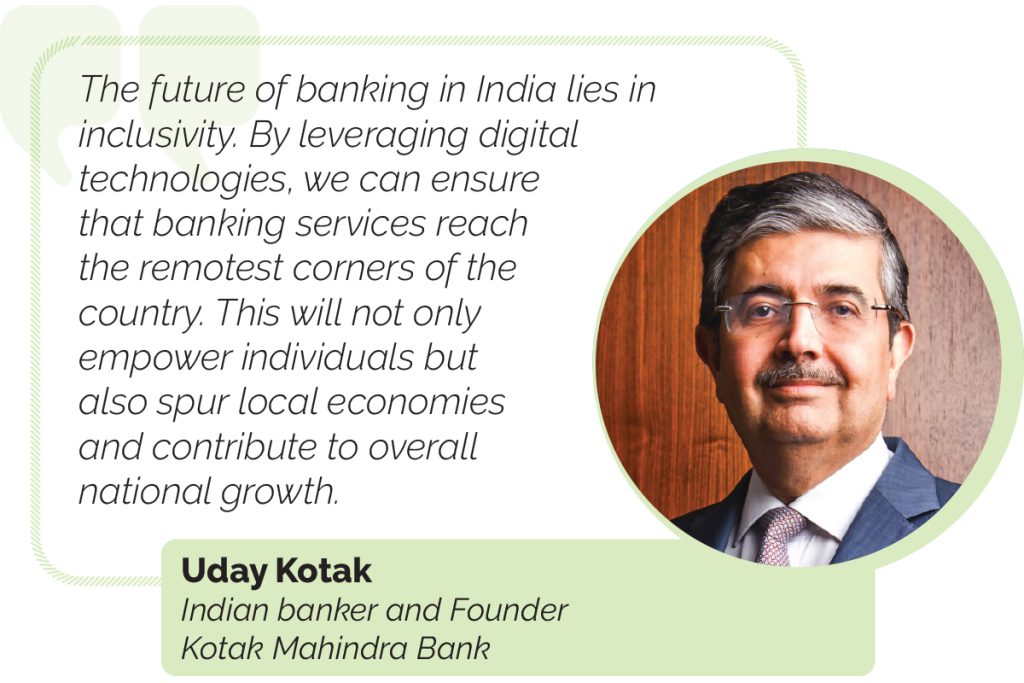
“India’s banking sector has immense potential, but it must navigate a complex landscape of risks and opportunities. By fostering a culture of innovation and ensuring robust regulatory frameworks, India can create a sustainable and inclusive banking environment.”
Global impact and strategic positioning
As India gears up for 2047, its banking sector is poised to play a pivotal role in the global economy. The country’s strategic position in the global supply chain, coupled with a dynamic banking sector, will attract foreign investments and enhance its economic influence.
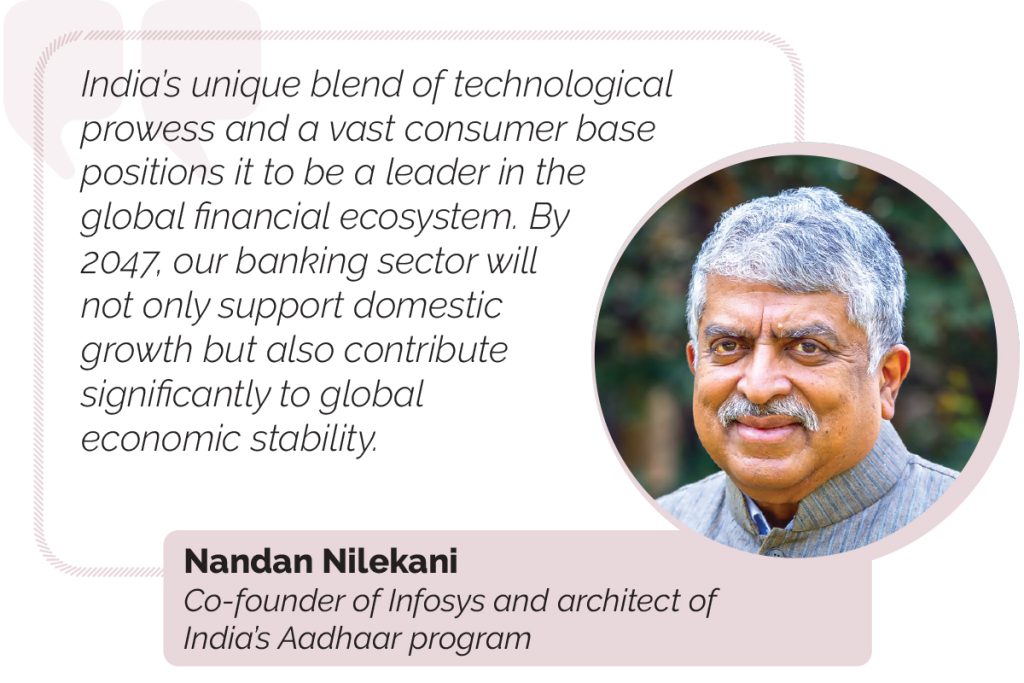
“India’s unique blend of technological prowess and a vast consumer base positions it to be a leader in the global financial ecosystem. By 2047, our banking sector will not only support domestic growth but also contribute significantly to global economic stability.”
- Nandan Nilekani, co-founder of Infosys and architect of India’s Aadhaar program
Digital transformation in banking
Banks are advancing in updating their legacy systems. Leading private sector banks like ICICI Bank and HDFC Bank, and the public sector giant State Bank of India, have implemented innovative layers above their core banking systems (CBS) for experimentation.
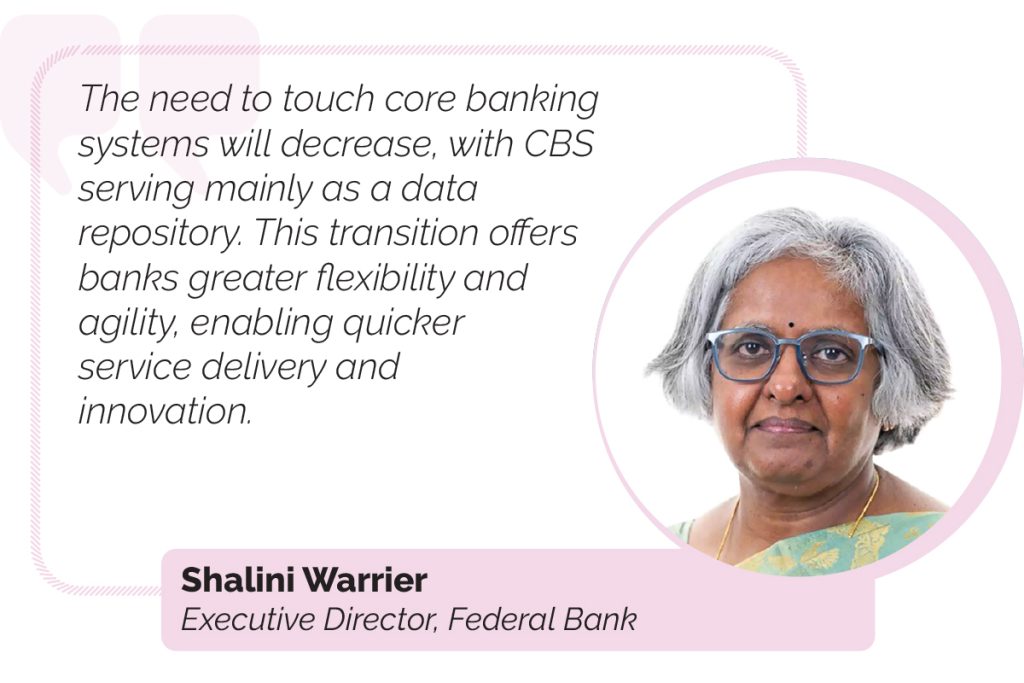
“The need to touch core banking systems will decrease, with CBS serving mainly as a data repository. This transition offers banks greater flexibility and agility, enabling quicker service delivery and innovation.”
- Shalini Warrier, Executive Director, Federal Bank
Open banking and data utilisation
Open banking is set to be transformative by 2047. The RBI initiated this with the Account Aggregator (AA) framework in 2021, empowering customers to consent to share their data with other institutions. This innovation will allow third-party lenders to offer better financial products. The AA framework will significantly benefit the MSME segment, enhancing cash-flow-based lending through improved data quality and evaluation methods.

“Integrating AA with platforms like UPI and ONDC presents a robust financial model that will drive innovation and growth.”
- Niraj Hutheesing, Founder and MD of Cygnet Infotech.
Expanding credit accessibility
P2P and P2M payments are thriving due to UPI, linked to customer accounts. The next expansion in UPI involves linking it with RuPay credit cards, broadening credit accessibility, particularly in semi-urban and rural areas. This will leverage India’s extensive UPI-based QR code network, facilitating credit growth in a market where the credit-to-GDP ratio remains low. Global card networks like Visa and Mastercard are expected to join this expansion, increasing credit opportunities.
Future prospects
In the past decade, the anticipated disruption of traditional banks by fintech has evolved into a synergistic partnership. As we approach 2047, the journey of India’s banking sector continues, with innovation and digital transformation paving the way for a dynamic financial landscape.
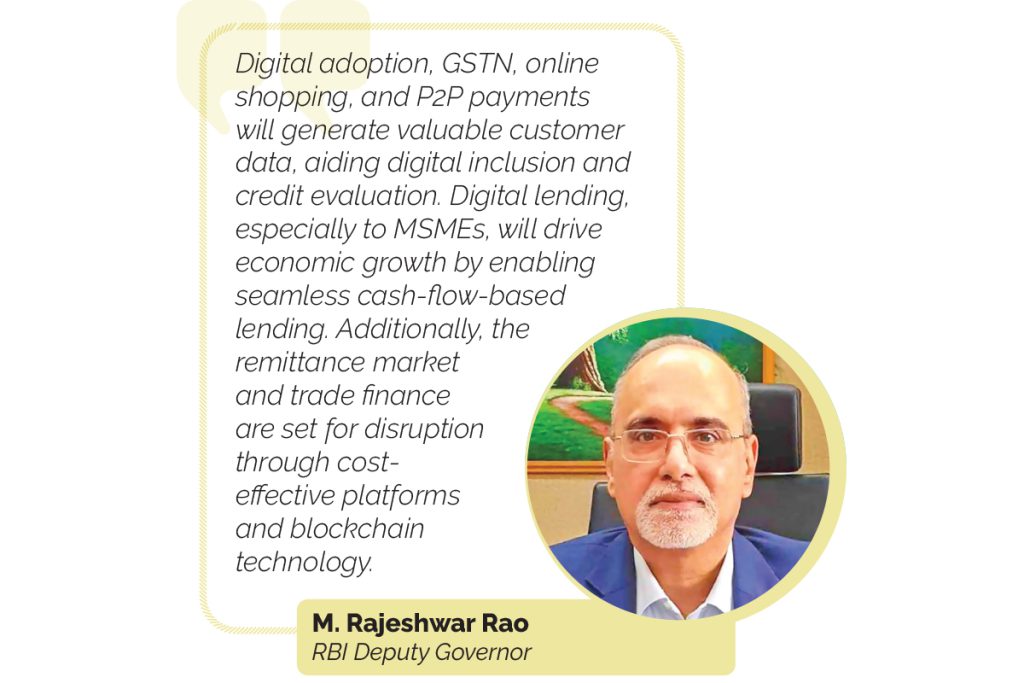
“Digital adoption, GSTN, online shopping, and P2P payments will generate valuable customer data, aiding digital inclusion and credit evaluation. Digital lending, especially to MSMEs, will drive economic growth by enabling seamless cash-flow-based lending. Additionally, the remittance market and trade finance are set for disruption through cost-effective platforms and blockchain technology.”
- M. Rajeshwar Rao, RBI Deputy Governor


